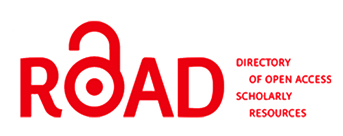INISIASI RONGGENG DALAM NOVEL RONGGENG DUKUH PARUK KARYA AHMAD TOHARI KAJIAN RESPON ESTETIK
Abstract
This study aims to describe the world of ronggeng in Ahmad Tohari's novel Ronggeng Dukuh Paruk in terms of Wolfgang Iser's Aesthetic Response theory. The source of research data is the novel Ronggeng Dukuh Paruk by Ahmad Tohari published in 2011 by PT. Gramedia Pustaka Utama. The data collection technique was done by reading notes, namely reading accompanied by careful and thorough recording of the whole novel related to the ronggeng repertoire. This research is a qualitative descriptive study. This technique is carried out through the steps 1) reading, 2) identification, 3) classification, 4) interpretation, and 5) inference. The results showed that 1) Through reading based on Iser's repertoire theory, the culture revealed in the Ronggeng Dukuh Paruk novel can be seen. The culture that was revealed was the culture of the Javanese people, especially the existence of the traditional ronggeng art; 2) Peronggengan in Java, traditionally cannot be separated from the initiation of "peronggengan" as a prerequisite for someone to become ronggeng; and 3) There is a pergowokan profession whose existence intersects with the world of ronggeng.
Â
Â
Keywords: repertoire, wolfgang iser, ronggeng dukuh paruk, gowok
Full Text:
PDFReferences
Dahlan, D. A. (2005). Tayub Pati dan Ledheknya.Yogyakarta:Ciptamedia
Hauser, A. (1985). The Sociology of Art. Chicago & London: The University of Chicago Press.Holub, Robert C. 1989. Reception Theory: A Critical Introduction. London: Roudledge.
Geertz, C. (1983). Abangan, Santri, Priyayi dalam Masyarakat Jawa. Jakarta: Penerbit Pustaka Jaya.
Irianto, A. M. (2005). Tayub antara Ritualitas dan Sensualitas. Semarang: Labolatorium Seni dan Kebudayaan Lengkongcilik.
Iser, W. (1987). The Act Of Reading: a Theory of Aesthetic Response. London: The Johns Hopkins University Press.
Kleden, I. (2004). Sastra Indonesia dalam Enam Pertanyaan. Jakarta: Grafiti.
Koentjaraningrat. (1994). Kebudayaan Jawa. Jakarta: Balai Pustaka.
Moleong, Lexi J. (1989). Metodologi Penelitian Kualitatif. Bandung: CV Remadja Karya.
Munawar, M, F. (2007). Kasidah Burdah Al-Bushiry dan Popularitasnya dalam Berbagai Tradisi: Suntingan Teks, Terjemahan, dan Telaah Resepsi. Yogyakarta: Universitas Gadjah Mada.
Mulyana. (2006) Jurnal Kebudayaan Jawa. Vol I. No 2. Spiritualisme Jawa: Meraba Dimensi dan Pergulatan Religius Orang Jawa. Jurusan Pendidikan Bahasa Daerah. Fakultas Bahasa dan Seni UNY
Santosa, I. B. (2001). Budaya Transfsormatif. Yogyakarta: LKIS
Selden, R. (1993). Panduan Membaca Sastra Masa Kini (Diterjemahkan Rachmad Djoko Pradopo). Yogyakarta: Gadjah Mada University Press.
Suharto, B. (1999). Tayub Pertunjukan dan Ritus Kesuburan. Yogyakarta: Masyarakat Seni Pertunjukan Indonesia.
Sukari. (2009) Jurnal Jantra. Tanggapan Masyarakat terhadap Sebuah Tari Pertunjukan Rakyat Tayub di Kabupaten Pati Jawa Tengah.
Suraji. (2006) Jurnal Kebudayaan Akedemika. Vol 4. No 1. Religiusitas Tarian Lengger. Ilmu Perbandingan Agama Akademi Maritim Nusantara Cilacap.
Tohari, A. (2011). Ronggeng Dukuh Paruk. Jakarta: PT Gramedia pustaka Utama.
Widyastutiningrum, S. R. (2007). Tayub di Blora Jawa Tengah. Yogyakarta: Pascasarjana Isi Surakarta dan Isi Press Surabaya.
.
DOI: http://dx.doi.org/10.30742/sv.v3i1.1181
Refbacks
- There are currently no refbacks.
Â
Recommended tools: | Â | Supported by: |









